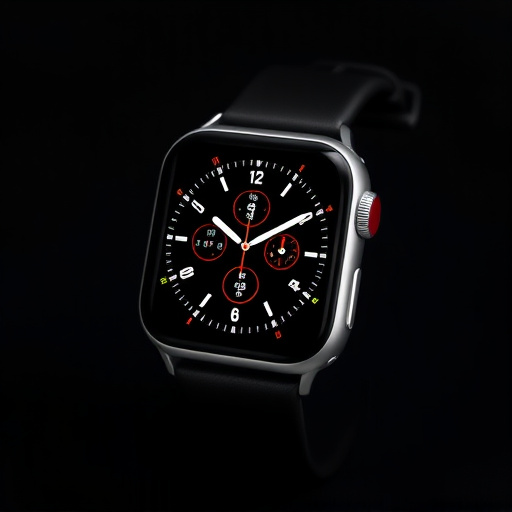Monitor your Apple Watch's battery life. Replace the battery if it shows significant degradation, frequent charging, or reduced performance. Follow a simple replacement process and maintain good charging habits to extend battery lifespan.
Your Apple Watch, a stylish companion that tracks your health and connects you to the world, can only perform at its best with a robust power source. This article delves into the crucial aspect of maintaining your watch’s longevity—the replacement battery. From understanding battery drain to identifying common issues, we guide you through the process, offering insights on when it’s time for an upgrade. Learn about the benefits of freshening up your device and discover expert tips to maximize future battery life.
- Battery Life: When Your Watch Needs a Change
- Understanding Apple Watch Battery Drain
- Common Causes of Battery Replacement
- How to Know If It's Time for a New Battery
- Benefits of Upgrading to a Fresh Battery
- The Process: Replacing Your Apple Watch Battery
- Tips for Prolonging Your Next Battery Life
Battery Life: When Your Watch Needs a Change

The lifespan of your Apple Watch’s battery is one clear indicator when it’s time for a replacement. Over time, as the battery ages, its capacity to hold a charge decreases significantly, leading to frequent need for charging and shorter durations between charges. If you find yourself constantly plugging in your watch throughout the day or struggling to make it through an average workout session without running out of power, it might be signaling that the battery needs replacing.
Keep an eye on how quickly your watch’s charge diminishes, especially during regular use. If you notice a dramatic drop in battery life and charging patterns don’t improve with simple adjustments like dimming the display or disabling unnecessary apps and features, consider getting your Apple Watch’s battery replaced to maintain its performance and ensure you’re not left stranded without timekeeping functionality.
Understanding Apple Watch Battery Drain

The Apple Watch, while a powerful tool for fitness tracking and communication, can sometimes exhibit unexpected behavior due to battery drain. This issue is multifaceted, with several factors contributing to its occurrence. One primary cause is frequent use of intensive apps or features like GPS tracking, which demand significant power from the watch’s small battery. Additionally, prolonged exposure to high temperatures or direct sunlight can accelerate battery degradation, leading to faster drainage.
Regular updates and an optimized watch face can help mitigate these problems, but for many users, a complete replacement of the Apple Watch battery becomes necessary over time. Knowing when to consider a replace apple watch battery is key; signs like a significantly reduced battery life, frequent need for charging, or difficulty maintaining a charge throughout the day underscore the requirement for a battery swap.
Common Causes of Battery Replacement

The primary reason for replacing your Apple Watch’s battery is its gradual degradation over time, leading to diminished performance and eventual failure. Several factors contribute to this decline, with age being the most significant. As the watch ages, the chemical reactions within the battery lose efficiency, reducing its capacity to hold a charge. Extreme temperature fluctuations can also accelerate this process, so proper storage and usage conditions are essential.
Additionally, frequent use of power-intensive features like GPS tracking, regular app engagement, or continuous notifications can drain the battery faster, necessitating more frequent replacements for top-tier performance. Users often notice that their Apple Watches require a replace Apple Watch battery sooner when engaging in demanding activities or using various connected devices simultaneously.
How to Know If It's Time for a New Battery

If your Apple Watch has been showing signs of decreased performance, it might be time to consider a battery replacement. Over time, the battery’s capacity diminishes, leading to shorter durations between charges. Look out for frequent and quick battery drain even when you’re not using resource-intensive apps or features like GPS tracking. Additionally, if your watch takes longer than usual to wake up or respond to interactions, these could be indicators that its power source needs attention.
When deciding whether to replace the apple watch battery, pay attention to specific behaviors and changes in functionality. For instance, if you can no longer rely on the ‘raise to wake’ feature consistently or if the display brightness seems lower than before, these are strong signals that a replacement might be necessary. Regular monitoring of your device’s health through the built-in settings can also provide valuable insights into when it’s time for a battery swap.
Benefits of Upgrading to a Fresh Battery

Upgrading to a fresh Apple Watch battery offers numerous advantages. One of the most notable benefits is improved performance and extended device life. An old, drained battery can lead to slower response times and frequent interruptions in your daily routines, but a new one ensures your watch keeps up with your active lifestyle. It allows for seamless tracking of workouts, notifications, and other activities without constant worry about power levels.
Additionally, a replacement battery provides better reliability and peace of mind. Original batteries degrade over time, leading to unpredictable performance and potential safety hazards if not managed properly. With a fresh battery, you can rely on your Apple Watch to function optimally, ensuring accurate health metrics, secure data transmission, and consistent connectivity with your smartphone or other devices. This upgrade is especially beneficial for those who depend heavily on their watches for work, fitness goals, or daily organization.
The Process: Replacing Your Apple Watch Battery

Replacing your Apple Watch battery is a straightforward process that can be accomplished quickly, allowing you to get back to using your favorite device without hassle. First, locate the power button on your watch and press it until the screen turns off and on again. This step ensures that you’re starting with a fully charged battery. Then, navigate to the watch’s settings by tapping the corresponding icon. Within the settings menu, find and select “Battery.” Here, you’ll see options to adjust various settings related to power usage, but your primary goal is to locate the “Replace Battery” option.
Tap on this choice, and follow the on-screen instructions. Your Apple Watch will guide you through a series of steps, which may include providing information about your current battery health or suggesting specific actions to optimize battery life. Once you confirm, the watch will initiate the battery replacement process. This might involve removing the back cover (if detachable) or opening up the device for access to the battery. It’s recommended to consult official Apple guidelines or a certified technician for precise steps, as procedures can vary slightly between models.
Tips for Prolonging Your Next Battery Life

To maximize the lifespan of your Apple Watch and avoid frequent battery replacements, there are several tips you can follow. First, enable power-saving modes whenever possible. This includes lowering the brightness of your display, disabling unnecessary apps running in the background, and utilizing energy-efficient watch faces. Regularly updating your watchOS is also crucial; newer versions often include optimizations that enhance battery life.
Additionally, consider adjusting your charging habits. Aim to charge your Apple Watch during specific times rather than constantly keeping it plugged in. Modern Apple Watches have power-saving features designed for everyday use, so take advantage of these built-in optimizations. Regularly cleaning and inspecting the watch’s charging port can also prevent issues that may hinder battery charging efficiency.
If your Apple Watch’s battery life has significantly diminished, it might be time to consider a replacement. By understanding the common causes of battery drain and knowing the signs that indicate the need for an upgrade, you can ensure optimal performance. A simple battery replacement process allows you to get back to enjoying all the benefits of your watch without interruption. Prolonging the life of your next battery through thoughtful care can further extend its useful lifespan, keeping you connected and informed for years to come.
